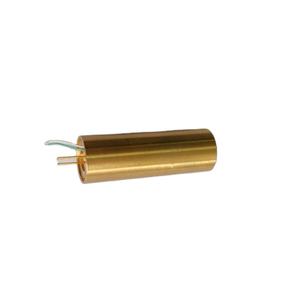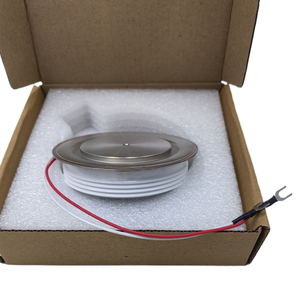Thyristors Online | High-Quality Power Semiconductors
Spark to Life: Clever Tricks to Wake Up Your Thyristor
(Different Methods To Turn On The Thyristor ?)
Ever wondered how those powerful little switches inside your dimmer switch or motor controller actually kick into action? That little powerhouse is likely a thyristor. Think of it like a stubborn gatekeeper. Once it’s awake, it lets current flow freely. But waking it up? That needs the right nudge. Let’s explore the smart ways engineers get this job done.
1. What is a Thyristor Anyway?
A thyristor is a solid-state semiconductor device. It acts like a super-reliable switch for controlling high power. It usually has three terminals: Anode, Cathode, and Gate. The magic happens between the Anode and Cathode. Once the thyristor turns on, current flows freely from Anode to Cathode. Turning it off is a different story. It usually needs the current flowing through it to drop nearly to zero. This makes it perfect for AC circuits where the current naturally crosses zero every half-cycle. People often call it a Silicon Controlled Rectifier (SCR), which is actually the most common type of thyristor. It’s the workhorse for managing power in many devices you use daily.
2. Why Do We Need Different Ways to Turn a Thyristor On?
You might ask, why not just use one simple method? The answer lies in the application. Different jobs need different tools. Sometimes you need precise control over exactly when the thyristor starts conducting during an AC cycle, like smoothly dimming a light. Other times, you just need the thyristor to fire reliably under tough conditions. The circuit itself matters too. Some setups naturally provide the voltage needed for certain triggering methods. Safety and cost are big factors. Simpler methods might be cheaper but less precise. More complex methods offer control but add cost. Choosing the right triggering method is key to making the whole system work well and last long.
3. How Can We Actually Turn On a Thyristor? The Key Methods Explained
Getting that thyristor conducting requires overcoming a small barrier at its main terminals. Here are the main tricks engineers use:
Gate Triggering: This is the most common way. Think of the Gate terminal like a secret whisper. Apply a small positive voltage pulse between the Gate and Cathode. This injects current into a specific layer inside the thyristor. It kick-starts the internal process. Once started, the main current takes over. It’s precise, uses low power, and gives you control over the exact turn-on point. Almost all modern thyristor circuits use this method.
Forward Voltage Triggering (Breakover): Imagine pushing harder and harder on a stuck door until it suddenly bursts open. If the voltage between the Anode and Cathode gets high enough without any Gate signal, the thyristor will eventually give in and turn on. This voltage is called the Breakover Voltage. It’s not a preferred method. It can stress the device and is unpredictable. Engineers design circuits to avoid accidentally reaching this voltage.
Light Triggering (Photothyristor): Some special thyristors have a window. Shine a bright light pulse, usually from an LED or laser, directly onto the silicon inside. The light energy creates extra charge carriers. This fools the thyristor into thinking it got a Gate signal. Why use light? It creates perfect electrical isolation between the control circuit and the high-power thyristor. This is crucial in very high voltage systems like power transmission. It prevents nasty voltage spikes from damaging the delicate control electronics.
dv/dt Triggering: This one is sneaky. It’s not usually intentional. If the voltage across the Anode and Cathode rises extremely fast (high dv/dt), it can generate enough internal current to turn the thyristor on prematurely. It happens due to tiny internal capacitances. This is mostly a problem. Engineers add protective circuits (like snubbers) to slow down voltage rises and prevent accidental turn-on.
Temperature Triggering: Heat makes semiconductors misbehave. If a thyristor gets too hot, the natural leakage currents inside it increase. If they get large enough, they can trigger the device without any Gate signal. This is definitely not good. It usually means something is wrong, like poor cooling or excessive current. Proper heat sinking is vital to prevent this thermal runaway.
4. Where Do We See Thyristor Triggering in Action?
Thyristors are everywhere we need solid-state control of AC power:
Light Dimmers: That smooth control of your room lights? Gate triggering makes it happen. A small circuit generates precise Gate pulses relative to the AC waveform, chopping parts of it to reduce brightness.
Motor Speed Controls: Controlling the speed of big AC motors in factories or even some power tools often uses thyristors. Gate triggering adjusts the power delivered to the motor windings.
Battery Chargers: Many chargers convert AC wall power to DC for the battery. Thyristors act as controlled rectifiers. Gate pulses determine how much charging current flows.
High-Voltage DC Transmission (HVDC): Moving massive power over long distances uses HVDC. Giant thyristor valves perform the AC-to-DC and DC-to-AC conversion. Light triggering is king here for its superb isolation at extreme voltages.
Heating Controls: Industrial furnaces and electric ovens often use thyristors to switch heating elements on and off precisely. Gate triggering manages the power level accurately.
Overvoltage Protection (Crowbars): In sensitive power supplies, a thyristor waits. If the output voltage spikes dangerously high, a circuit quickly triggers the thyristor via its Gate. This shorts the output (like dropping a crowbar across it), blowing a fuse but saving the equipment downstream.
5. FAQs About Turning On Thyristors
Can a thyristor turn on by itself? Normally, no. It needs one of the triggering methods. But high dv/dt or excessive heat can cause unwanted turn-on. Good circuit design prevents this.
What happens if I apply a Gate signal but the Anode voltage is too low? Nothing. The Gate signal needs the Anode-to-Cathode voltage to be above a small threshold (a few volts) and positive for the thyristor to latch on. The Gate pulse alone isn’t enough without this forward bias.
How fast does Gate triggering work? Very fast! Turn-on times are typically in microseconds. The delay is mostly due to the control circuit generating the pulse at the right moment.
Is Gate triggering safe? Yes, generally. The Gate control circuit uses low voltage and power. It’s isolated from the high-power main circuit in most designs.
Why avoid Breakover Voltage triggering? It stresses the device. Each breakover event can cause tiny damage inside the silicon. This shortens the thyristor’s lifespan. It’s also hard to control precisely.
What’s the main advantage of light triggering? Electrical isolation. The control circuit can be thousands of volts away from the thyristor it switches. This is essential for safety and reliability in mega-power systems.
(Different Methods To Turn On The Thyristor ?)
How do I choose the right triggering method? Consider your needs. Need precise timing? Gate triggering. Need ultimate isolation at high voltage? Light triggering. Avoiding accidental turn-on? Focus on controlling dv/dt and temperature. Cost and complexity matter too.


